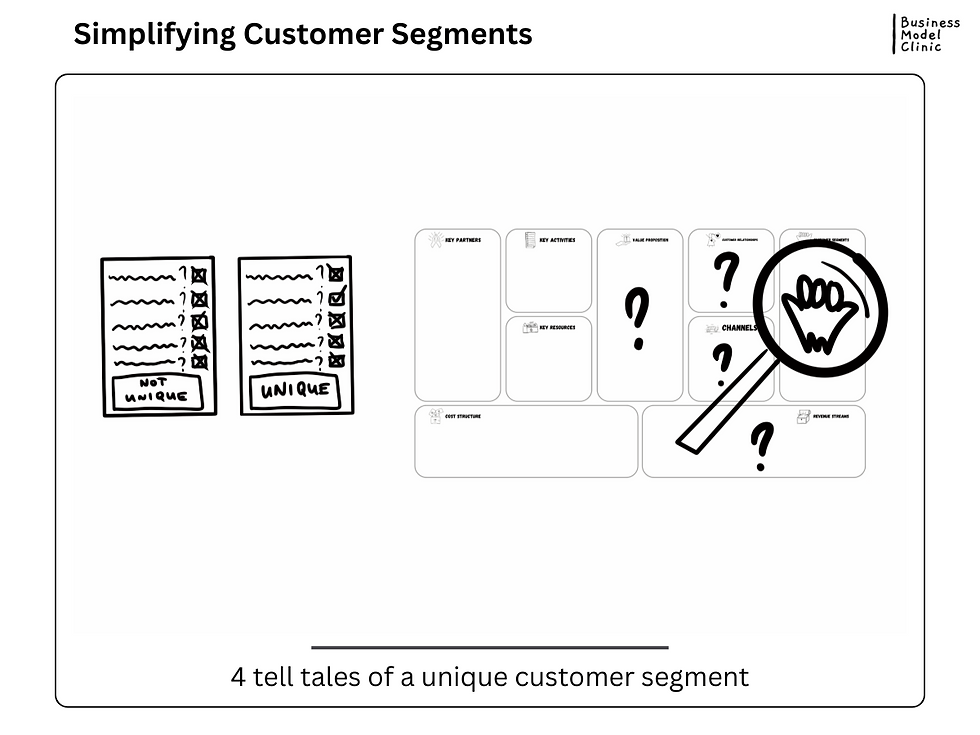Simplifying Customer Segments with 4 Simple Questions
- Baran Korkut
- Dec 2, 2024
- 2 min read
Updated: Mar 11
When beginners start drafting their Business Model Canvas, they often end up overcrowding it. While the information they plot may be correct, the real question is: Is all of it necessary? The answer is often no.
Since most people begin by filling out either the Customer Segments or Value Proposition boxes, let’s focus on simplifying the Customer Segments section.
One of the main reasons for an overcrowded canvas is incorrect customer segmentation. Many people default to traditional demographic segmentation—age, gender, income, etc. While this may seem logical, it often leads to clutter and confusion.
Instead, we need to focus on behavioral segmentation. This approach defines customer segments based on:
Jobs to be done: What task or problem is the customer trying to solve?
Pains: What frustrations or challenges do they experience?
Expected gains: What benefits or outcomes are they looking for?

Behavioral segmentation offers a clearer, more practical way to identify distinct customer groups. If you're unfamiliar with this approach, look into concepts like Customer Empathy, Value Proposition Design, and Customer Jobs to Be Done for more insights.
To figure out whether a specific customer segment deserves its place on the canvas, look at the boxes that connect to Customer Segments:
Channels
Customer Relationships
Revenue Streams
Value Proposition (via revenue link)
Now, ask yourself the following questions:
Is there a unique value proposition for this customer segment?
Are different channels used to reach this segment?
Are distinct customer relationships developed for this segment?
Does this segment require a different revenue model or price point?

If you answer no to all of these questions, the segments you're considering may not be truly distinct. In that case, it’s best to consolidate them.
An effective Business Model Canvas is about clarity and focus. By ensuring that your customer segments are truly distinct and necessary, you'll create a more streamlined and actionable business model. Focus on behavioral segmentation and critically assess each segment’s unique value to avoid unnecessary clutter and complexity.




Comments